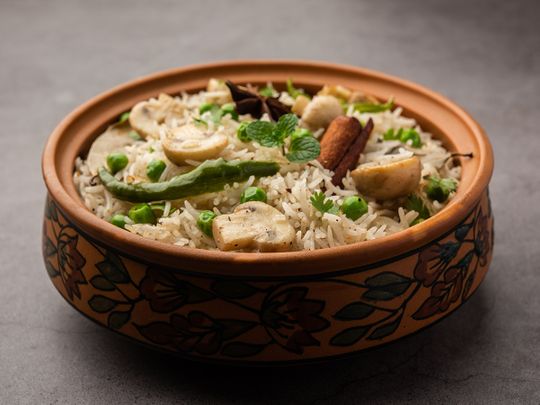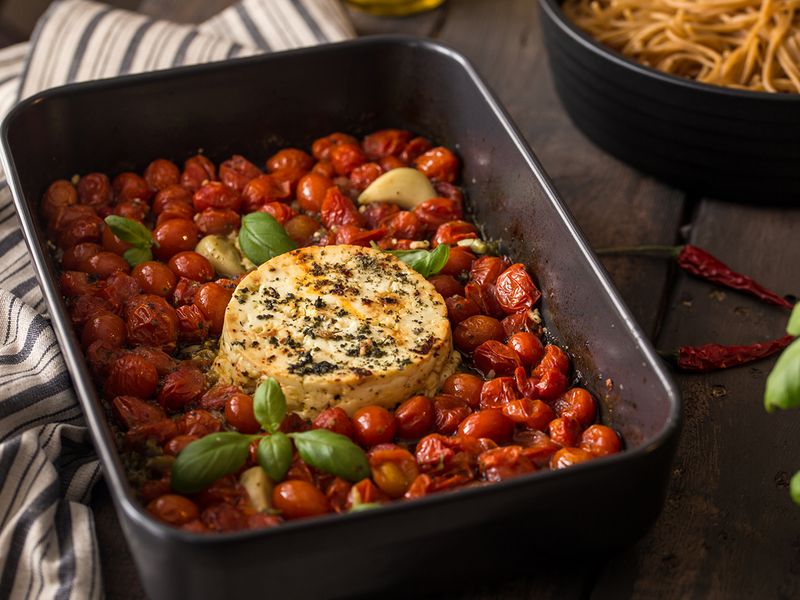
Highlight
From social media straight to your iftar table, Keith J Fernandez helps you plug into the most droolworthy trends this Ramadan
We epicureans everywhere have had a tougher lockdown than most. Barely a week goes by without some fantastic new dish being served up on social media for our virtual consumption. But while several influencers have come under fire for posting impossible (read: faked) food recipe hacks such as making cake frosting from ice-cream, there are nevertheless a number of trending dishes that are genuinely innovative, relatively easy to replicate and ideally suited to our eating habits in Ramadan.
We’ve sorted through endless viral food trends to bring you these four. Do try them at home during Ramadan.
Rice, but different: Kalaan Biryani
Biryani is an iftar staple across the Gulf, and while it’s impossible to get enough of its decadent gloriousness, variations on the classic recipe are warmly welcomed over the course of the holy month.
Kalaan biryani is one of those reworkings, with Village Cooking’s version from the Indian state of Tamil Nadu going viral since politician Rahul Gandhi stopped by in January, clocking up 22 million views so far.
How to make it: This fairly straightforward recipe simply uses mushrooms in place of the traditional proteins such as chicken or mutton, and then follow the standard process: cook the mushrooms in ghee and spices of your choice, layer with parboiled rice and steam.
The trick here is to use heavy mushrooms such as chestnut or cremini, which hold up well when twice cooked.
Why it’s perfect for Ramadan: Mushrooms are lighter and easier to digest than meat, so this plant-forward recipe is great for a humid summer day. Add a side of cucumber raita, and you’ve got yourself a one-dish iftar that’s sure to win fans.
Cheesy, quick comfort food: Baked feta pasta

Chef Vincenzo Prosperi spoke for Italians everywhere when he said, “Why? Why? Whyyyy? Why you make this pasta go viral and not my nonna’s pasta?” He was reacting to baked feta pasta on his YouTube channel following the dish’s appearance on TikTok feeds everywhere recently. Its success is credited to Finnish blogger Jenni Häyrinen (@liemessa), who apparently sparked a run on block feta at Scandinavian supermarkets by posting her version of compatriot Tiiu Piret (@tiiupiret)’s Uunifetapasta on Instagram.
How to make it: To create this no-brainer, simply pop cherry tomatoes and a block of feta into the oven at 200 degrees Celsius for 35 minutes. Stir in crushed garlic, fresh basil and the pasta of your choice – macaroni, fusilli and farfalle are common options, but Chef Vincenzo recommends casarecce pasta, a short, rolled pasta that’s slightly twisted and is perfect for holding sauces.
Why it’s perfect for Ramadan: Baked feta pasta is exactly the sort of comfort food you want after a long day’s fast. Not only are there endless ways to upgrade it, but whether you’re adding shallots, broccoli or whatever else takes your fancy, you can get iftar on the table with minimal effort.
Light, floaty and low-carb: Cloud bread

Keto fans are already familiar with oopsie bread, a light and fluffy low-carb substitute for sandwich slices. The fancy new name comes from its resemblance to fluffy cirrus clouds, but at heart it’s really just a cheesy meringue. TikTok user @linqanaaa has been credited with its creation, but cloud bread seems to have first shown up as Revolution Rolls in the seventies for adherents of the low-carb Atkins diet.
How to make it: Just like a meringue, you start with whipped egg whites, sugar and a stabiliser such as corn starch or cream of tartar, and bake for 20 minutes until the tops are craggy. Garnish with flaked almonds. If you want a savoury version, swap the sugar for cream cheese.
Why it’s perfect for Ramadan: The recipe is a great way to try something different without piling on the carbs – although calories are calories, whatever their source. So yes, ideal for keto fans.
Sustenance at suhour: Baked oats

An easy way to finesse gold old-fashioned porridge oats, this cakey take on baked oatmeal comes together quickly — provided you have a blender and some baking staples to hand, as British celebrity chef Phil Vickery demonstrated on ITV This Morning recently.
How to make it: The hack here is to blitz breakfast oats to a coarse powder and then add in milk, eggs, banana and a pinch of salt to make a nice smooth batter. Fold in whatever ingredients you like: chocolate chips, nuts, fruit, sweet potato or turkey bacon, and any spices you fancy and pop it into the oven at about 180 degrees Celsius until a skewer comes out nearly clean.
Why it’s perfect for Ramadan: Nearly every dietician will recommend oats for their fibre content, which keeps you feeling full for several hours. They’re also cheap and packed with nutrients. And because they’re gluten-free, you don’t need to worry about feeling bloated or nauseous afterwards.












